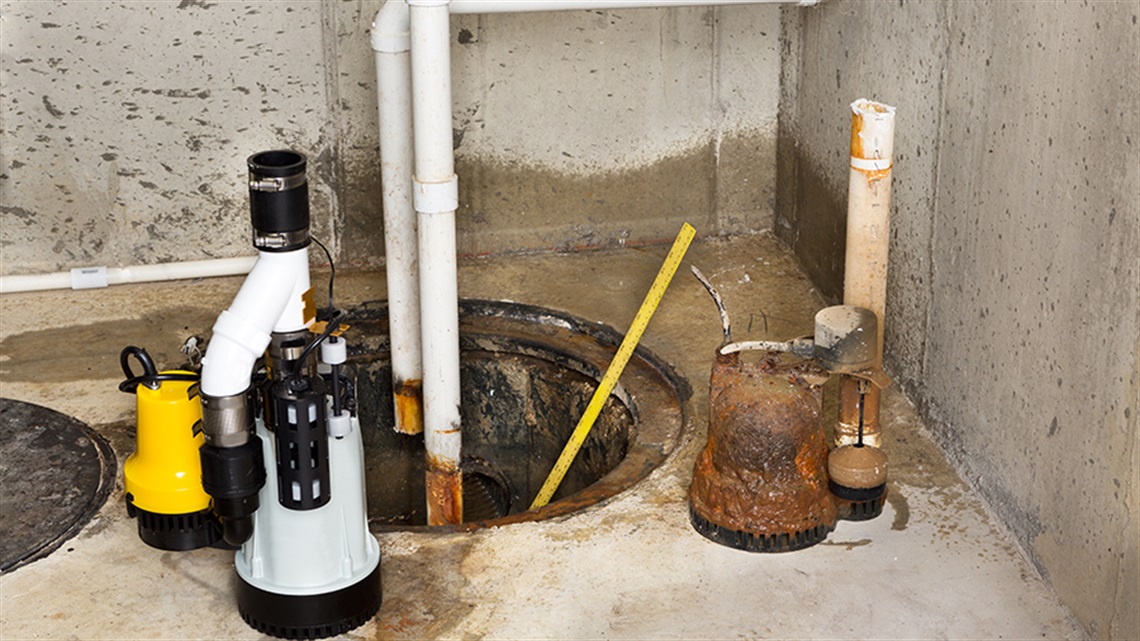Sump Pumps

How you address water in your basement depends on where the water is entering.
Find the source of basement flooding
Floor drain: Contact a plumber or Johnson County Wastewater at 913.715.8600.
Walls: This is groundwater. Check your downspouts and sump pump discharge to ensure they’re draining away from the foundation. Also check the grading around your foundation to ensure that it slopes properly away from the house. You could simply need to add a few inches of soil. If these conditions seem to be in order, contact a foundation repair company.
Window: Make sure windows are sealed, installed correctly and have no gaps. If you don’t have a window well cover, installing one is simple and inexpensive. Some homes also have a drain in the window well, which could become plugged.
Pick a smarter spot for sump pump discharge
Select a discharge location that slopes away from your house and takes your neighbors into consideration. We recommend your sump pump discharge at least 5 feet from your foundation.
With City permission, you can tie your sump pump drainage into adjacent city stormwater pipes and boxes directly. Be sure and apply for a Right-of-Way Permit before you attempt this.
By code, your sump pump discharge cannot be within 4 feet of the property line. Along roadways, due to right of way, 4 feet inside the property line typically equates to 15 feet behind the back of the curb.
Moving your sump pump discharge can redirect drainage problems but may not get rid of them entirely. Even if you follow the code, you may still have some issues.
Other things to take into consideration:
- Having a battery backup for your sump pump is a good idea.
- It isn’t uncommon for some homes to have multiple sump pumps.
- Make sure your gutters are clear. If you live in an area with lots of trees, you may look into gutter guards to prevent leaves and debris from entering your gutters.
Know your swales
You may notice a shallow ditch running through your yard, often on the back lot line or between homes. This is a swale, designed to carry water during the heaviest rain events. During and after larger rainstorms, you may notice deeper standing or rushing water in your swale — it may even look like a creek! This is by design and prevents water from entering your home.
Swales are the homeowner’s responsibility to maintain. Don’t block them with fences, sheds, playground equipment or landscaping.
Swales may stay moist for a longer period than the rest of your yard. This is expected, and there isn’t much that can be done about it. To minimize dampness, make sure there are no low spots in the swale.
Water runs downhill and is a common problem for everyone. It isn’t illegal for water to run onto a neighbor’s property – but it is always a good idea to work with your neighbor to solve drainage problems.
Know your flood risk and be prepared
Helpful map: The Flood Insurance Rate Map includes useful information.
Get insured: Ask your insurance agent if your policy includes flood damage. If you rent, make sure your renter’s insurance covers flood damage.
Ask for advice: If you have questions on flood insurance, flood depths at your property, rules for building in the flood plain and how to protect your property against flood damage, contact our staff at 913.477.7500.